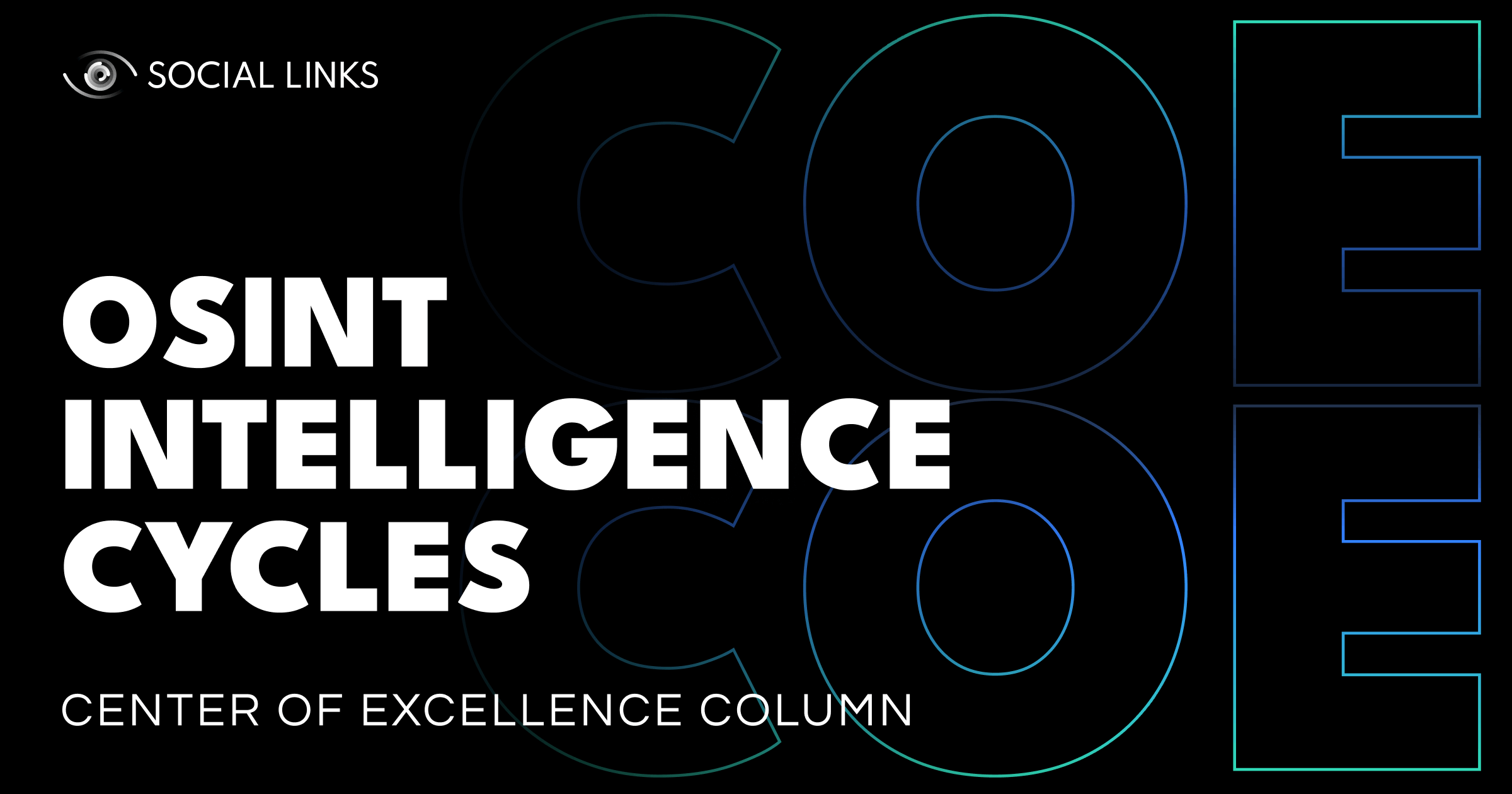Center of Excellence Column: OSINT Intelligence Cycles


This week in the Social Links Center of Excellence Column, we’re looking at intelligence cycles in OSINT. The communication of ideas is a crucial topic for many agencies, and a lack of understanding regarding the organization's needs can spell disaster for investigations. To help with this problem, we’re sharing our insights and giving you a glimpse into the cycle we use regularly.
Let’s jump in!
Imagine a cybersecurity agency with multiple departments. Naturally, the organization must consider a wide variety of information at any given time. With suspicious activity from diverse sources, the experts in the agency need to have a clear idea of what is required and how to achieve the desired results. This is where intelligence cycles come into play.
Simply put, intelligence cycles are a systematic process that agencies and organizations use to acquire, analyze, and share data and sensitive information. Similar to decision cycles, such as the OODA Loop (Observe, Orient, Decide, Act), these frameworks guide effective decision-making in response to evolving situations. Such information models help provide a structured approach for understanding, predicting, and responding to various challenges, from national security threats to geopolitical shifts and criminal activities.
The intelligence cycle is usually the backbone of strategic data generation. However, almost every organization adapts the information model to fit their needs by tweaking the following elements:
The key thing to understand is that just because an intelligence cycle differs from others doesn’t mean it’s worse. The designs reflect each organization's needs, priorities, and operational methodologies. Moreover, the differences highlight the adaptability of the concept to any context. With this idea in mind, we would like to introduce the intelligence cycle we commonly use at the Social Links Center of Excellence.
Conceived in 2012 by Arno Reuser and unveiled at the CIISS 2013 and OSIRA 2014 conferences, the RIS Propeller Intelligence Cycle aims to update intelligence methodologies to fit modern needs. This innovative model focuses on the changing data landscape and covers three interconnected phases that focus on a vital focal point: the customer.

This stage aims to understand the research assignment or requirement clearly, ensuring the final product aligns precisely with the customer's expectations. During the preparation phase, a comprehensive action plan is formed and evaluated with the customer. This meticulous process ensures the intelligence product is accurate and perfectly tailored to meet the specific demands of the end user.
Imagine you're a specialist working at an intelligence agency, and your goal is to counter terrorist activities. Here’s how you handle such a task:
This phase primarily covers researching and acquiring information. Experts gather, process, and index information to generate a comprehensive report. Specialists maintain the report’s integrity through a careful evaluation process in collaboration with the customer.
This phase is critical as analysis unfolds, turning raw data into actionable intelligence for informed decision-making. As the final step, the experts compile the finished report and send it to the relevant stakeholders.
And that’s the end of our piece about intelligence cycles. The RIS Propeller Cycle allows us to collaborate with customers even when conditions constantly change. With regular feedback and discussion, we can continuously improve the quality of our work and bring new insights to our customers for optimized decision-making.